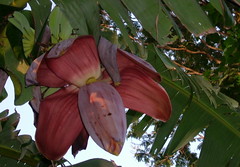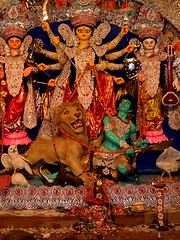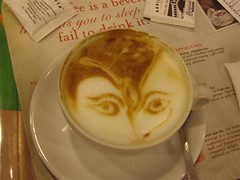B is for BANANA FLOWER
Growing up in upstate New York didn't grant me many opportunities to see bananas growing in the wild. That's why I was surprised to learn that a banana "flower" actually exists and is used in a tasty seasonal "mochar" dish here in Kolkata.
In the initial days of growth, the banana plant stem remains under the soil, with the fruit remaining on top. Gradually it grows above the soil in a full-fledged tree with the flower dwindling down from the tip. The extended stem remains inside called 'thor' in Bengali. The flower or 'mochar' in Bengali has three variety - male, female and sexless flower. Along with the typical banana fruit, the flower, when in season, is also sold in local markets.
The banana flower is deep purplish-orange color and forms on long drooping stalks. If you open the inside, you can see small flowers that would turn into banana. This is what is used to make the Bengali mochar curry dish here in Bengal. The process of removing all these small flowers is quite tedious, and then they must be soaked for quite some time in salt water to remove the bitterness before cooking.
'Kaancha kola,' or green banana is also used widely in cooking here.
In the initial days of growth, the banana plant stem remains under the soil, with the fruit remaining on top. Gradually it grows above the soil in a full-fledged tree with the flower dwindling down from the tip. The extended stem remains inside called 'thor' in Bengali. The flower or 'mochar' in Bengali has three variety - male, female and sexless flower. Along with the typical banana fruit, the flower, when in season, is also sold in local markets.
The banana flower is deep purplish-orange color and forms on long drooping stalks. If you open the inside, you can see small flowers that would turn into banana. This is what is used to make the Bengali mochar curry dish here in Bengal. The process of removing all these small flowers is quite tedious, and then they must be soaked for quite some time in salt water to remove the bitterness before cooking.
'Kaancha kola,' or green banana is also used widely in cooking here.



